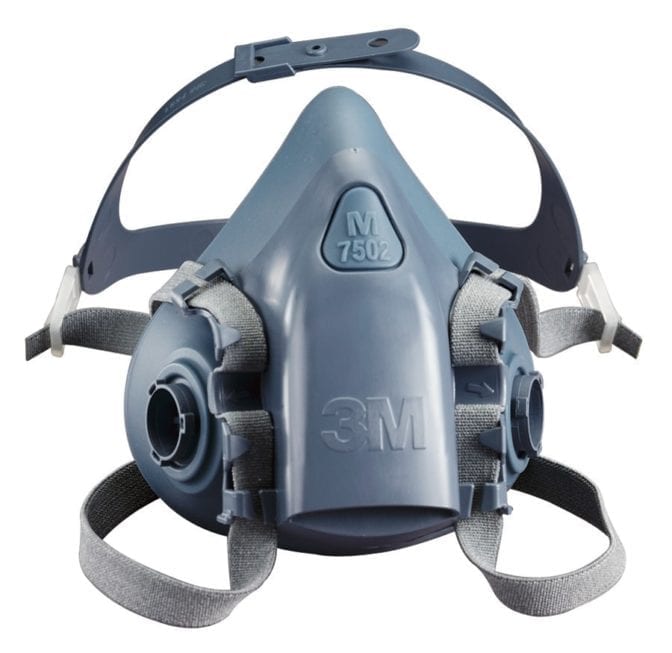 Proper inspection, cleaning and storage of respirators is important if you want to extend their useful life and maintain effectiveness when filtering potentially dangerous air particles. Tending to respirator masks directly impacts your health and safety at work.
Proper inspection, cleaning and storage of respirators is important if you want to extend their useful life and maintain effectiveness when filtering potentially dangerous air particles. Tending to respirator masks directly impacts your health and safety at work.
Inspecting
It’s crucial to inspect respirator masks before each use. Check the straps for tears and loose areas, while also inspecting the seal for damage or debris.
If you have a full-face respirator, check for missing parts, cracks or other damage, especially with the lenses (for best vision), inhalation valves, filter gaskets and seals. When it comes to replacing parts, use products approved by the National Institute for Occupational Safety and Health (NIOSH).
If a respirator is damaged or beyond repair, remove it from service immediately.
Cleaning
In addition to making sure respirator replacement parts are NIOSH-approved, you should also clean respirators in accordance with the Occupational Safety and Health Administration’s (OSHA) respective procedures. This means cleaning and thoroughly inspecting a respirator after each use (if being worn by a different person). Here are the basic cleaning steps:
- Wash your hands. (They could contain dangerous chemicals from the job you’re working on.)
- Disassemble the different respirator parts. (Including the gasket where the cartridges come off, any rubber material covering the mouthpiece, as well as rubber flaps near the center hole.)
- Wash the components in warm water. (NOTE: Cartridges and/or filters can’t be washed. They’re best cleaned with respirator wipes.)
- Use a cleaner recommended by the manufacturer. (Make sure you’re using a disinfecting agent.)
- Let all parts air dry before reassembly.
Details matter when cleaning respirators. Use a brush with stiff bristles instead of a wire brush. Remember, disposable dust masks and particulate respirators are not designed to be cleaned but should rather be disposed of after use.
Storing
Many elements can damage respirators, including dust, humidity, sunlight, extreme temperatures and chemicals, which is why it’s important to follow these guidelines when storing your respirators:
- Avoid leaving respirators on workbenches, tractor cabs or dashboards.
- Rather, use a cool, dry and protected place that’s away from the job site or elements mentioned above.
- Place the cartridges in a sealable plastic bag.
- Don’t set anything on top of a respirator.
NOTE: Some cartridges will continue to absorb chemicals they’re exposed to. Change the cartridges if you begin to detect odors or irritation. Read your owner’s manual for additional instructions.
Recap: Proper inspection, cleaning and storage of respirators
Follow these best practices to master the inspection, cleaning and storage of respirator masks. These steps are important because they directly impact your health and safety at work.
Related posts
How to wear a disposable respirator mask
How to use a defibrillator: ZOLL AED Plus features voice instructions